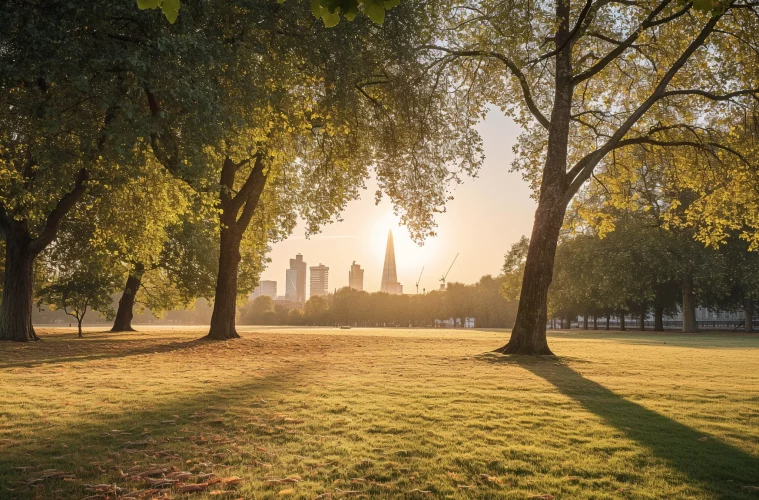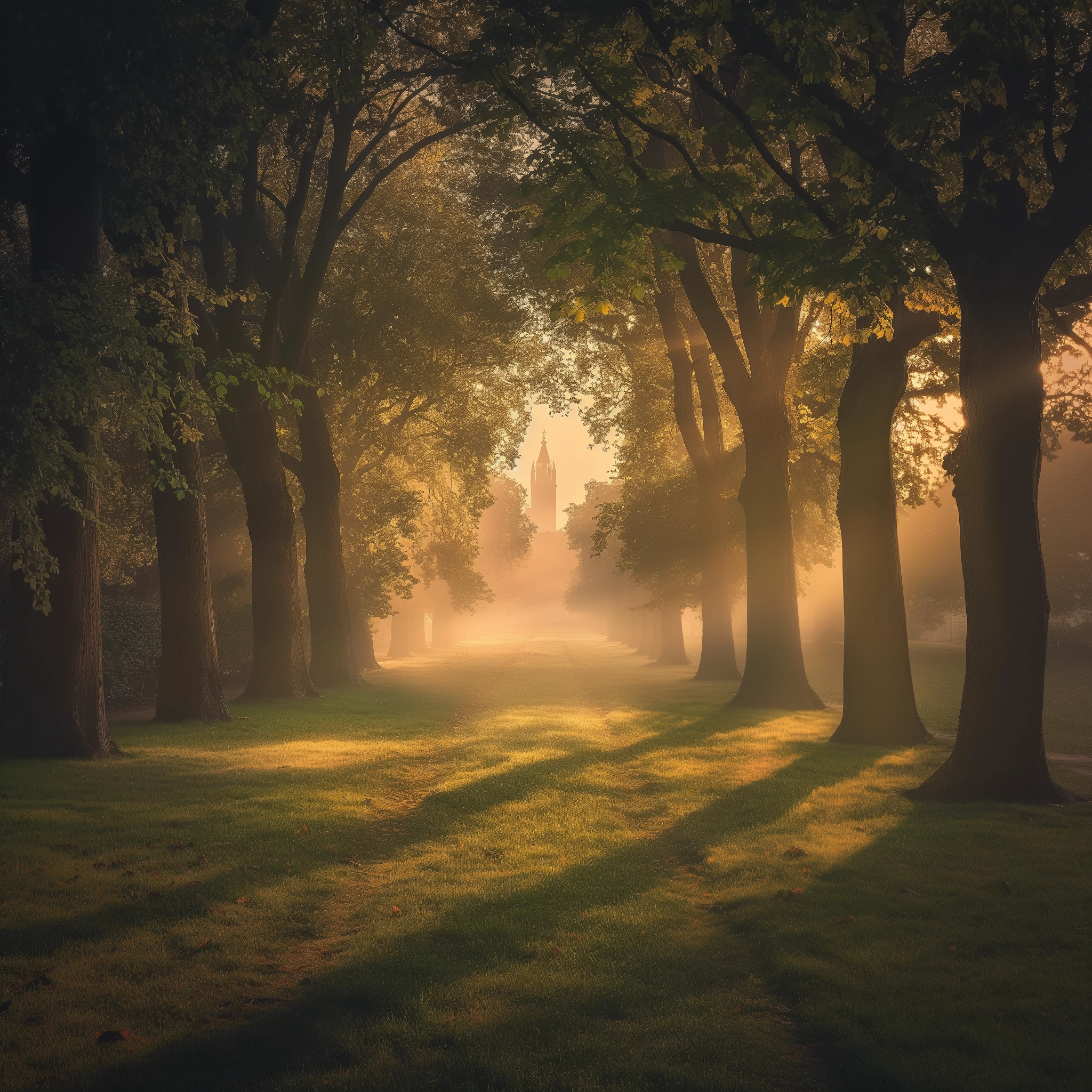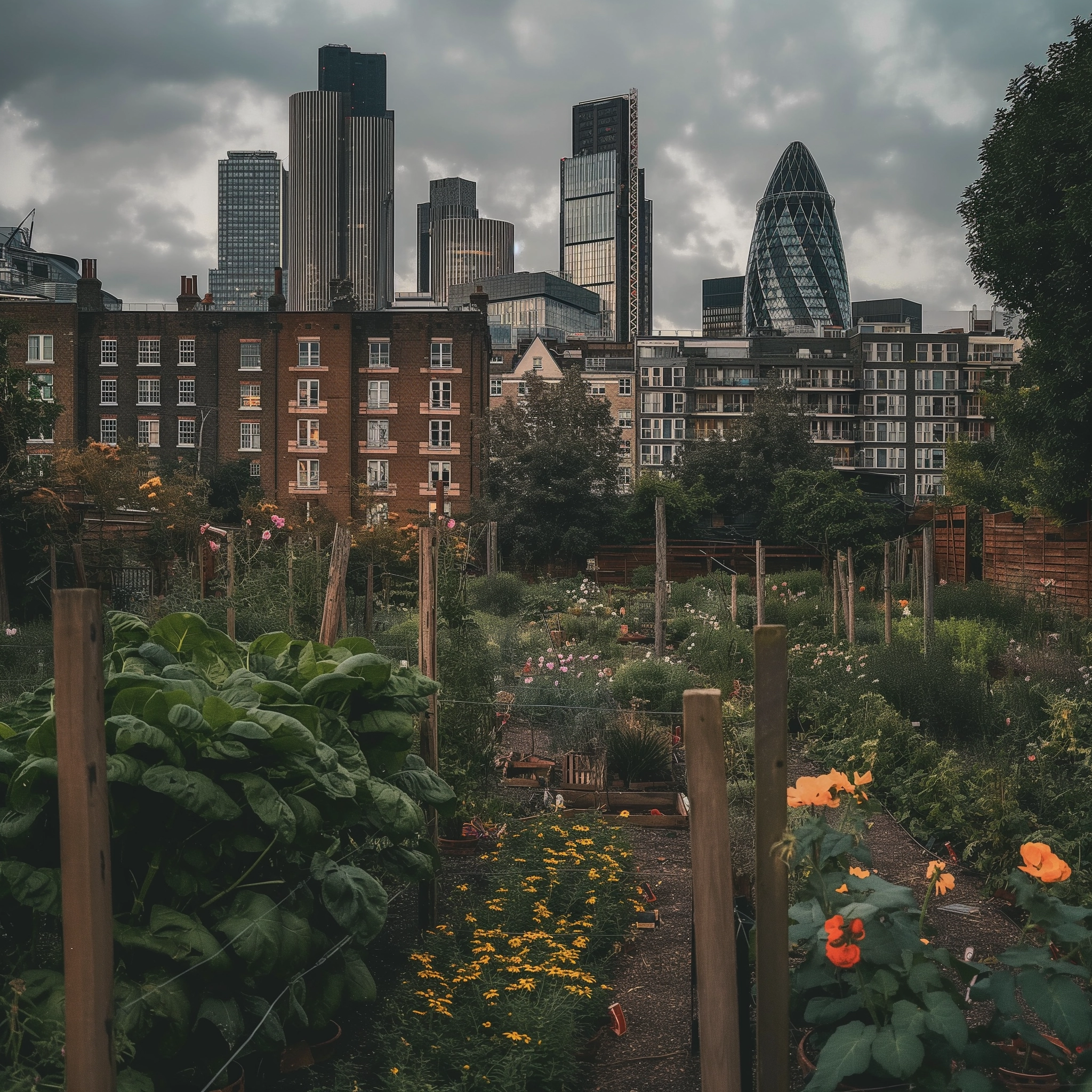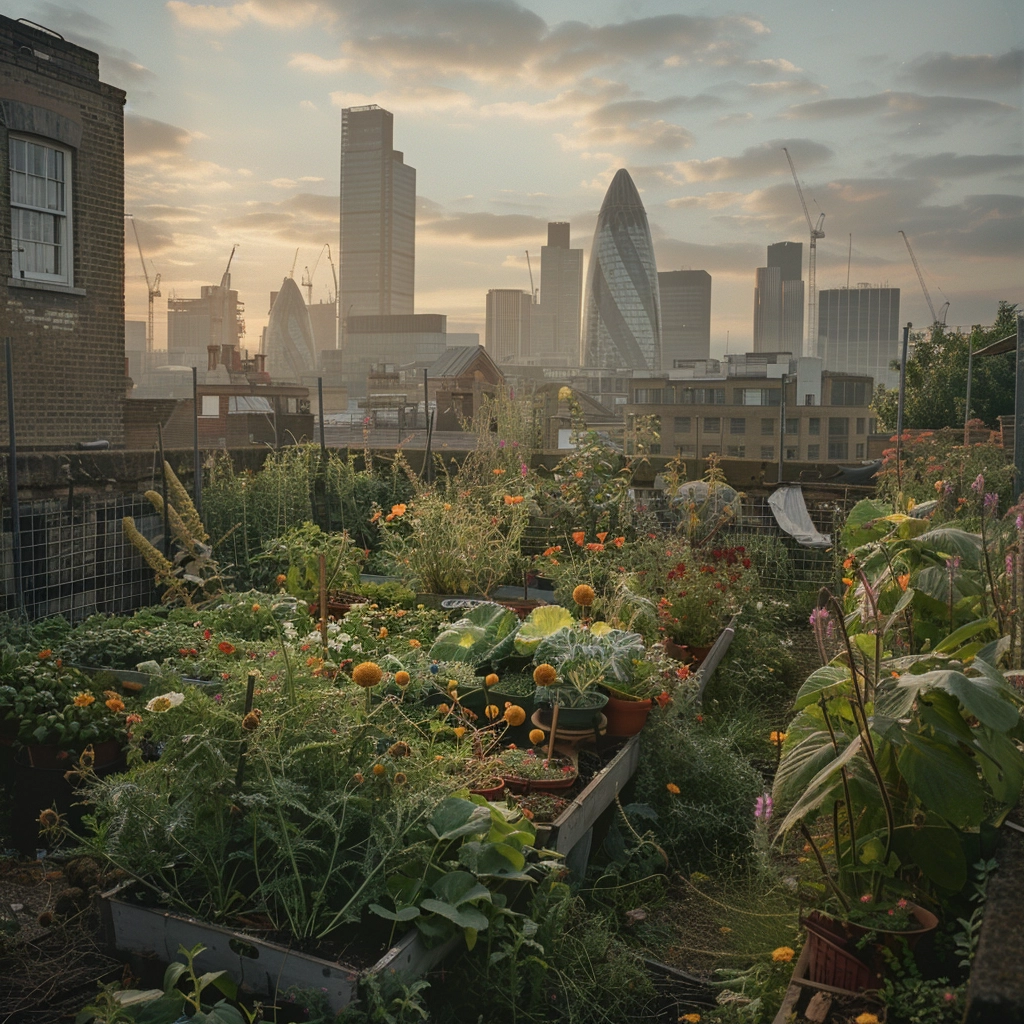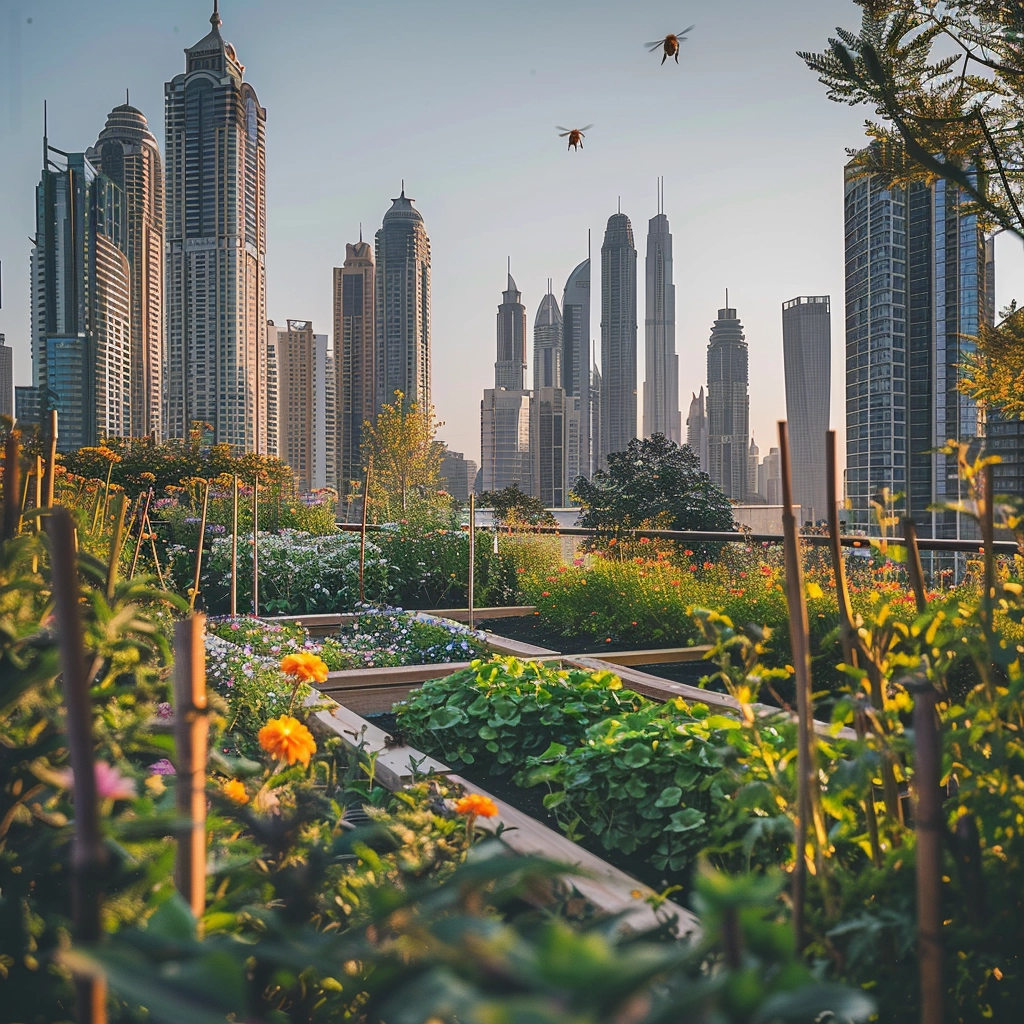Welcome to London’s Urban Oasis: Unveiling the Green Heart of the City
In the hustle and bustle of London, the city’s green spaces and urban gardens stand as serene sanctuaries, offering a breath of fresh air and a pause from the rapid pace of city life. These verdant havens are not only crucial for the well-being of city dwellers but also play a pivotal role in promoting biodiversity amidst the urban sprawl.
Urban gardens and green spaces serve as essential lungs for the city, improving air quality and providing serene spots for relaxation, recreation, and socialisation. They’re a testament to the fact that even in the heart of a metropolis, nature can thrive and offer respite.
These green spaces are biodiversity hotspots, offering shelter and resources for a wide range of flora and fauna. By supporting diverse ecosystems, they contribute to the ecological health of the urban environment, making the city more resilient to environmental challenges.
Engaging with London’s Green Spaces
Whether you’re a local resident or a tourist, London’s parks, gardens, and green corridors are open for exploration, relaxation, and enjoyment. Through guided tours, volunteer opportunities, and community gardening projects, everyone has the chance to connect with nature and contribute to the city’s green legacy.
This introduction lays the groundwork for delving deeper into the significance of London’s green spaces, inviting us to explore how these urban oases are not just about providing aesthetic appeal but are integral to the city’s environmental sustainability, community well-being, and cultural richness.
A Stroll Through History: The Evolution of London’s Green Spaces
London’s green spaces are more than just areas of natural beauty; they are living, breathing reminders of the city’s rich history. As we walk through these verdant landscapes, we’re treading paths that have been shaped by centuries of social, cultural, and political change.
The development of London’s parks and gardens has been influenced by historical events ranging from the enclosure movements to the philanthropic deeds of the Victorian era. For instance, the creation of public parks in the 19th century was driven by a desire to provide green spaces for recreation amidst the industrial revolution’s urban sprawl.
From the royal hunting grounds of Hyde Park to the community gardens of East London, these spaces have evolved to meet the changing needs and values of Londoners. Each era has left its mark, transforming these areas into the multifaceted green spaces we cherish today.
Cultural and Social Evolution
The history of these spaces mirrors London’s cultural and social evolution, reflecting shifts in attitudes towards leisure, nature, and public health. They’ve served as venues for historic events and social reforms and have been the backdrop for countless personal moments and memories.
Understanding the layered history of London’s green spaces not only enriches our appreciation but also deepens our connection to the city. It’s a reminder of the enduring importance of these areas in London’s urban fabric and the role they play in the lives of those who visit and care for them.
Iconic Green Spaces: Exploring London’s Famous Parks and Gardens
London’s Royal Parks, such as Hyde Park and Kensington Gardens, are not just expanses of greenery but symbols of the city’s historical and cultural fabric. These iconic spaces serve as communal hearts where history, culture, and nature intertwine, offering unique experiences to all who visit.
The Significance of Royal Parks
Hyde Park and Kensington Gardens stand out for their historical significance and cultural heritage. Once hunting grounds for royalty, they now serve as democratic spaces for leisure, reflection, and celebration. Their iconic status is a testament to London’s ability to preserve its history while adapting to the needs of a modern city.
These parks mirror London’s historical and cultural identity, hosting monuments, memorials, and landscapes that tell stories of the city’s past. They are spaces where history is alive, breathing life into the lessons of yesteryears and inspiring visitors with their beauty and resilience.
Unique Features for Everyone
From the Serpentine Lake in Hyde Park to the Italian Gardens in Kensington, these parks offer unique features that cater to both locals and tourists. Whether it’s enjoying a boat ride, marvelling at sculptures, or attending vibrant events, there’s something for everyone.
The beauty and diversity of these parks inspire urban gardening efforts across London. They showcase the potential of green spaces to enhance urban life, encouraging communities to create their own oases in the metropolis. Through their example, we’re reminded of the value of integrating nature into our urban environments, fostering a city that breathes, thrives, and inspires.
Hidden Gems: Discovering Lesser-Known Green Spaces in London
London isn’t just about its famous parks; it’s also home to tranquil, lesser-known green spaces that offer serene escapes from urban life. These hidden gems, nestled in various corners of the city, provide unique experiences far removed from the well-trodden tourist paths.
Places like the Isabella Plantation in Richmond Park or the secret gardens within Hampstead Heath allow for peaceful solitude amidst nature’s beauty. They are perfect for those seeking quiet and reflection away from the city’s hustle.
Each hidden green space boasts its own character, from community gardens buzzing with local wildlife to historical walled gardens that transport visitors back in time. Their uniqueness lies in their ability to offer something unexpected.
Community Well-being
These spaces are vital for local communities, serving as places for relaxation, play, and socialisation. They enhance the urban living experience by providing a much-needed connection to nature.
Exploring these lesser-known areas offers a different kind of engagement with nature. Here, you can enjoy a moment of peace, observe the intricate details of the local ecosystem, and appreciate the value of preserving these quiet oases in a bustling city.
Urban Gardening Movements: Community Gardens and Their Impact
Community gardens have blossomed across London, transforming urban landscapes into patches of green that nourish the city’s soul. These grassroots initiatives have redefined vacant plots and forgotten lands into vibrant spaces that bring communities together, fostering a sense of belonging and shared purpose.
These green havens offer more than just a place to cultivate plants; they nurture community spirit, provide fresh produce, and enhance local biodiversity. They’re vital in promoting environmental awareness and sustainability, creating green corridors for wildlife amidst the concrete jungle.
Benefits to Urban Communities
Community gardens contribute significantly to improving mental health, reducing pollution, and offering educational opportunities about nature and sustainability. They become outdoor classrooms, therapeutic spaces, and social hubs where diversity flourishes.
For those looking to get their hands dirty, joining a community garden project is as simple as reaching out to local gardening groups or councils. These projects welcome everyone, regardless of gardening experience, fostering inclusivity and collective learning.
Urban gardeners often face hurdles like limited space, funding, and resources. However, their resilience and creativity shine through as they utilise innovative gardening techniques, secure grants, and build partnerships to overcome these obstacles, proving that even in a metropolis like London, community-driven green spaces can thrive.
The Science of Urban Greening: Benefits and Challenges
Urban greening has emerged as a pivotal element in enhancing the environmental and social fabric of cities. Scientific research continues to unveil the extensive benefits these green spaces offer, alongside the challenges faced in integrating nature into urban landscapes.
Green spaces act as urban lungs, purifying the air and reducing urban heat islands, thereby mitigating the effects of climate change. They also provide critical habitats for biodiversity, supporting ecosystems within concrete jungles.
Boosting Mental and Physical Health
Access to green spaces has been linked to improved mental health, reducing stress and enhancing mood. Physically, they encourage exercise and outdoor activities, contributing to the overall health of urban residents.
Overcoming Urban Greening Challenges
Maintaining and expanding urban green spaces poses significant challenges, including land availability, funding, and the impact of climate change. Cities must navigate these obstacles while balancing development and conservation efforts.
The Role of Scientific Research
Scientific research is crucial in shaping sustainable urban greening strategies. It informs policy-making, guiding the design of green spaces that are resilient, beneficial, and accessible to all. Through continuous study, we can better understand how to maximise the benefits of urban green spaces while addressing the challenges they face.
Sustainable Practices in Urban Gardening: From Theory to Practice
In the heart of London, a green revolution is unfolding as sustainable gardening practices take root in its urban landscape. These eco-friendly approaches are transforming the way we interact with our environment, promoting a healthier, more sustainable future for all.
Implementing Sustainable Gardening Practices
London’s green spaces are increasingly adopting sustainable practices, such as composting organic waste, conserving water through rainwater harvesting, and planting native species that require less maintenance and support local wildlife. These practices not only enhance the ecological value of urban gardens but also serve as a model for environmental stewardship.
Promoting Environmental Sustainability and Biodiversity
By prioritising biodiversity, London’s green spaces become vibrant ecosystems that support a wide range of plant and animal life. Sustainable gardening practices, like creating wildlife corridors and using organic pest control, help maintain the delicate balance of urban ecosystems, ensuring they thrive.
The Role of Local Governments and Organisations
Local authorities and environmental organisations play a crucial role in supporting these initiatives by providing resources, funding, and educational programs to encourage community involvement and ensure the longevity of these practices.
How You Can Get Involved
You, too, can adopt sustainable gardening practices in your own spaces, regardless of size. From balcony gardens to window boxes, incorporating native plants, composting kitchen scraps, and avoiding chemical pesticides are steps we can all take to contribute to a greener, more sustainable London.
Engaging with Nature: Educational Programs and Volunteer Opportunities
London’s commitment to its green spaces extends beyond mere preservation, embracing a vision where community and nature thrive together. Through a variety of educational programs and volunteer opportunities, Londoners and visitors alike are invited to deepen their connection with the urban environment and contribute to its flourishing.
Numerous initiatives across the city offer workshops and courses on urban gardening, biodiversity, and environmental sustainability. From local community centres to the expansive Royal Botanic Gardens, Kew, there’s a wealth of knowledge waiting to be explored. These programs aim not just to educate but to empower individuals with the skills to make a tangible difference in their surroundings.
Contributing as Volunteers
Volunteering in London’s green spaces provides a hands-on way to support their maintenance and growth. Whether it’s participating in planting days, helping with wildlife surveys, or engaging in conservation projects, volunteers play a critical role in the ecosystem’s health and resilience.
Impact on Community Engagement
These educational and volunteering efforts significantly boost community engagement, bringing people together with a common purpose. They foster a sense of ownership and pride in local green spaces, encouraging more sustainable living practices within the community.
Fostering a Connection with Nature
By participating in these initiatives, individuals forge a deeper bond with the natural world, gaining a greater appreciation for the intricate ecosystems that thrive even in urban settings. This connection inspires ongoing commitment to environmental stewardship, ensuring that London’s green spaces continue to be cherished and nurtured for generations to come.
The Future of Urban Green Spaces: Innovations and Visions
As we look to the future, London’s green spaces stand on the brink of a transformative era. Innovations in technology and design, along with visionary planning by urban environmentalists, are paving the way for a new chapter in the city’s relationship with nature.
Pioneering Projects and Technological Advancements
Innovative projects such as the creation of ‘smart’ parks equipped with IoT devices for monitoring biodiversity and environmental conditions are reshaping our urban green spaces. These technologies not only enhance the management and maintenance of these areas but also enrich the visitor experience, making nature more accessible and interactive.
Transformative Design and Urban Planning
Design and urban planning are embracing sustainability and resilience, integrating green roofs, vertical gardens, and rain gardens into the urban fabric. These initiatives aim to combat urban heat islands, support biodiversity, and manage rainwater more effectively, showcasing a commitment to ecological and aesthetic excellence.
Envisioning the Future Together
Urban planners and environmentalists envision a future where green spaces are integral to urban living, contributing to the health and well-being of all city dwellers. Their vision includes more collaborative spaces that encourage community gardening, educational programmes, and spaces that adapt to the changing climate.
Your Role in Shaping the Future
As residents and visitors, you have a vital part to play in this green future. Whether through participating in community gardening projects, supporting local environmental initiatives, or simply enjoying and respecting these spaces, your engagement is crucial. Together, we can ensure that London’s green spaces continue to thrive and inspire for generations to come.
Cultivating Our Urban Eden: The Path Forward for London’s Green Spaces
The future of urban living is inherently linked with the health and accessibility of our green spaces. As we navigate the complexities of city life, the role of these natural havens becomes ever more critical. Their continuous growth and preservation are not just a matter of environmental necessity but of communal well-being and resilience.
Ongoing investment in green spaces is essential for creating sustainable urban environments. It’s not just about maintaining what we have but expanding and enhancing these areas to meet the needs of a growing population. This investment ensures that green spaces can continue to provide clean air, biodiversity, and a place for community gathering and recreation.
Community Contribution and Ownership
Individuals and communities play a pivotal role in nurturing these spaces. From local gardening initiatives to volunteer conservation projects, every action contributes to the larger goal of sustainability. By taking ownership of our local environments, we can create a network of cared-for, cherished green spaces across the city.
Lessons for Global Urban Landscapes
London’s commitment to integrating nature within its urban fabric offers valuable lessons for cities worldwide. Balancing development with ecological preservation, promoting community engagement, and prioritising green infrastructure are strategies that can guide the transformation of urban spaces globally.
To ensure that London’s green spaces continue to flourish, we must embrace innovation, community involvement, and sustainable practices. By doing so, we guarantee that these spaces remain a source of inspiration, health, and joy for generations to come, making London a true urban Eden.

